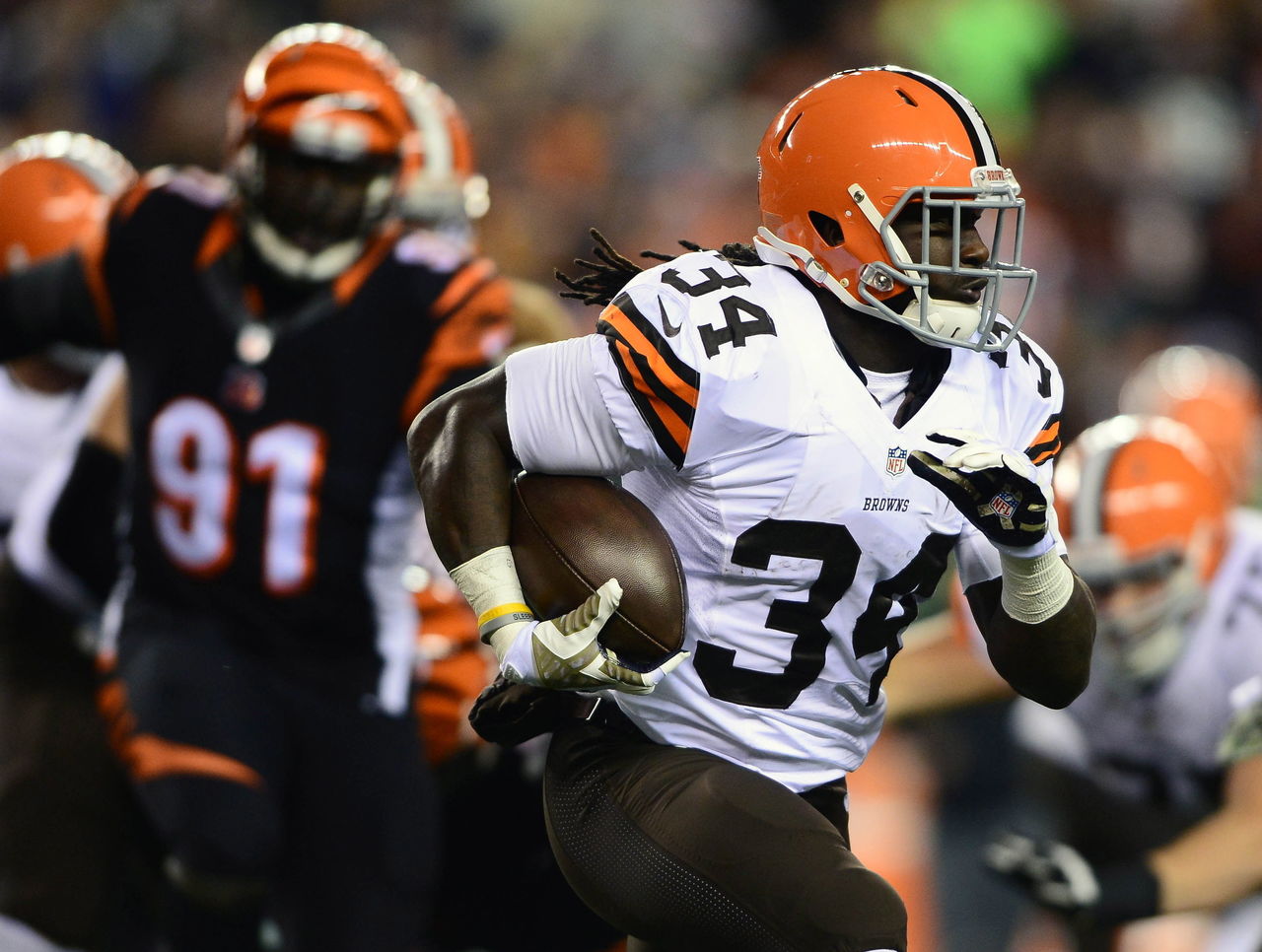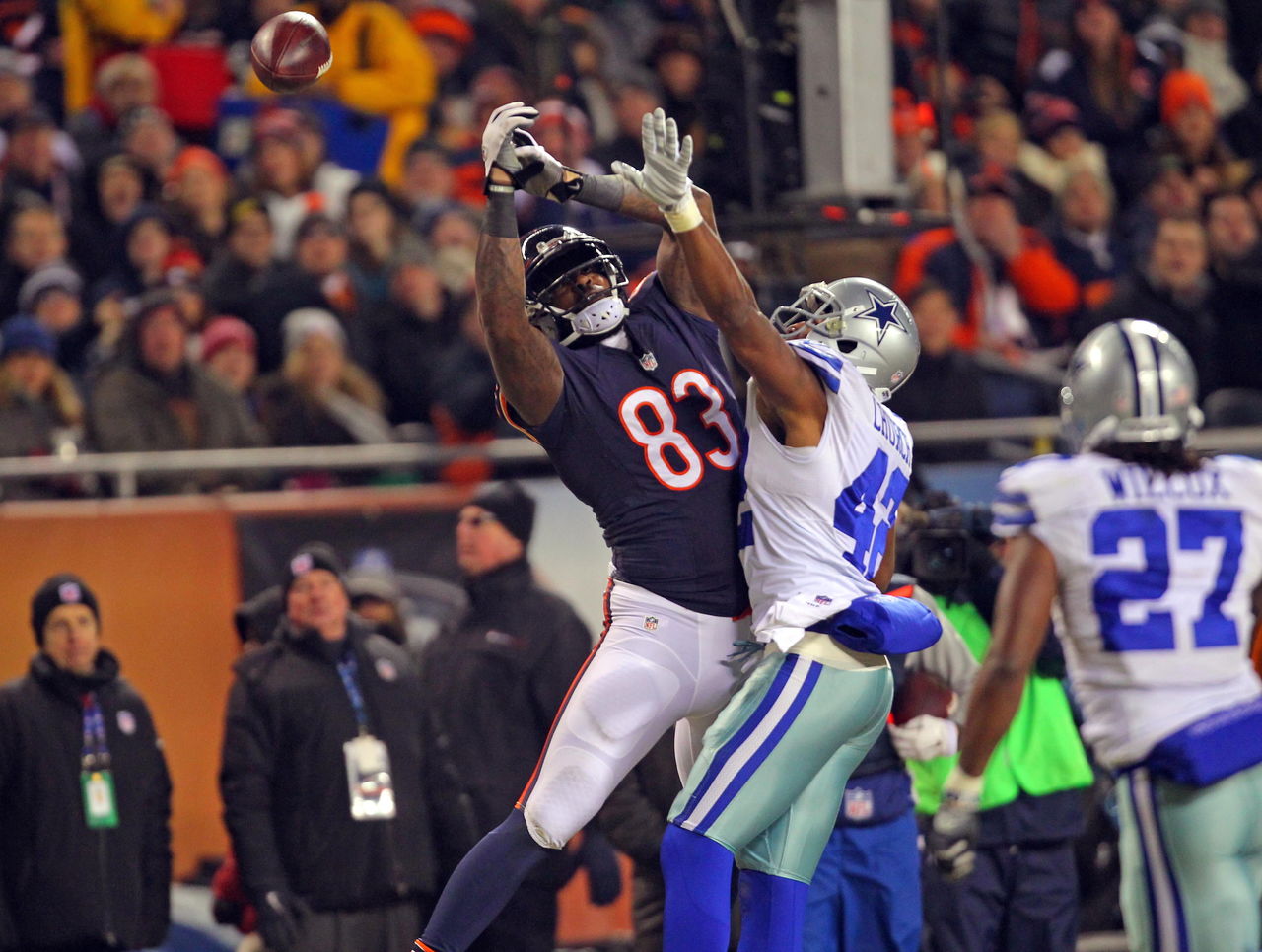DFS: When to Use a Tight End at Your FLEX Spot
Among the questions daily fantasy players ask themselves each week, one sticks out: what is the best way to use the FLEX spot?
While every other spot in a daily fantasy lineup has a tight group of players judged solely against other players at the same position, FLEX affords some interesting possibilities, depending on your objectives. Conventional wisdom says that athletic skill position players like running backs and receivers present the best upside. The only other eligible position at FLEX is tight end, and really how many game-changing TEs are there on the market besides the high-priced guys like Rob Gronkowski and Jimmy Graham.
Lower-tier TEs can be extremely valuable relative to their costs but still seem to exist outside of the realm of what we consider a "skill position player", despite the precedence for big-yardage, touchdown-catching TEs like the retired Tony Gonzalez.

Tight ends are still burdened by a negative stereotype that undercuts their skills: they don't have great hands; they're secondary targets on offense; they are blockers first and receivers second. These generalizations are the main reason tight ends are so heavily discounted in daily fantasy relative to other FLEX players.
The world's disparaging attitude towards TEs is a market inefficiency to be exploited in certain DFS formats.
Here is a sample of nine players - four TEs, three RBs and two WRs - ranked by their average fantasy points per game (FPPG) in standard formats:
| Player | Position | FPPG |
|---|---|---|
| Brandin Cooks | WR | 8.63 |
| Greg Olsen | TE | 8.55 |
| Chris Ivory | RB | 8.40 |
| Martellus Bennett | TE | 8.23 |
| Coby Fleener | TE | 7.84 |
| Darren Sproles | RB | 7.84 |
| Travis Kelce | TE | 7.64 |
| Malcom Floyd | WR | 7.60 |
| Isaiah Crowell | RB | 7.09 |
That's a pretty good sample of young and veteran players who all performed at roughly the same rate last year. Many of those names would have been available to fill out your roster as your FLEX player. These players are second-tier RBs and WRs that might be solid DFS plays depending on their match-ups but are generally unpredictable, or carry playing time concerns. The rest of the field is made up of Pro Bowl-caliber TEs.
Without assigning a dollar figure to the player's salary, you can objectively say that Bears' TE Bennett was generally a better play than Browns' upstart RB Crowell last year and that raises the question of perceived value.
Crowell emerged as the Browns' top rushing option last season for a team that didn't possess a prolific passing attack. The perception that Crowell will receive a large number of carries a game drives his price up tremendously.
Let's look at how involved Bennett and Crowell were in their offenses; combining the number of rushing attempts and targeted passes gives an approximate figure of their fantasy potential. Then there are the usual fantasy factors: yards from scrimmage, total touchdowns, and fumbles, adding up to fantasy points per game.
| Player | Tgt + Att | YScm | TD | Fmb | FPPG |
|---|---|---|---|---|---|
| M. Bennett | 128 | 916 | 6 | 0 | 8.63 |
| I. Crowell | 162 | 694 | 8 | 3 | 7.09 |
It's true that Crowell, the young starting RB, had a slightly larger role for his team, meaning more opportunities to rack up fantasy points. Clearly the difference maker is not how many opportunities a player has but what he does with those chances. Bennett was able to do more with less and his FPPG makes that clear.
Big statistical games from RBs are becoming rarer as offenses continue to open up their passing attack. Picking a TE at the FLEX spot in DFS has several advantages over picking an RB with a similar FPPG outlook.

For one, the risk in a turnover on a passing play is charged to the passing player, the quarterback, not the receiving player. A dropped pass doesn't penalize a TE, but a mistimed hand-off or sweeping pass to a RB does. Few receiving players amass large fumble totals; Bennett has just two fumbles in 108 career games. No points, however small, are insignificant factors in DFS.
A bigger concern is the nature of the positions and how modern NFL rosters are constructed. Different situations can emerge that often see back-up RBs and fullbacks steal carries, such as an increased injury-risk for ball carriers injury.
That's not always the case at TE, a position where teams are lucky if they can claim even one star-caliber player. If another TE does come into the game, it's rarely as a receiving option. Second-string TEs are usually employed as additional protection in the running game, a particular skill that DFS has little appreciation for.
TEs are relatively safe from point-cannibalism from the second-string and offer a different skill-set than other receiving-eligible players. What most TEs lack in elite speed, they balance out with size. Lack of elite speed can mean a lack long, "homerun" scoring plays, but teams that get to the red zone a lot often target their TEs. Physically over-matched defenders and short yardage routes play to the average TE's natural abilities.

The question of how to use your FLEX player becomes a matter of need. In cash games, TEs like Bennett offer stability of a high-floor, low-ceiling player. A quicker, more-athletic player like Crowell offers big-play potential that can swing an entire tournament line-up, but you also risk the bevy of concerns that come with high-usage ball-carriers, the least of which can be inflated pricing relative to expected performance. Regardless of format, the cost savings alone can justify the underrated choice of rostering a second TE at FLEX.
HEADLINES
- Report: Nuggets' Johnson avoids major knee injury, will still miss time
- Tatum-less Celtics are inspiring, Cavs are not, new anti-tanking measures
- 2026 World Junior Hockey Championship predictions: Podium, MVP, more
- NBA awards watch: Jokic, SGA in tense MVP duel
- Kerr: Timeout blowup with Draymond 'not my finest hour'